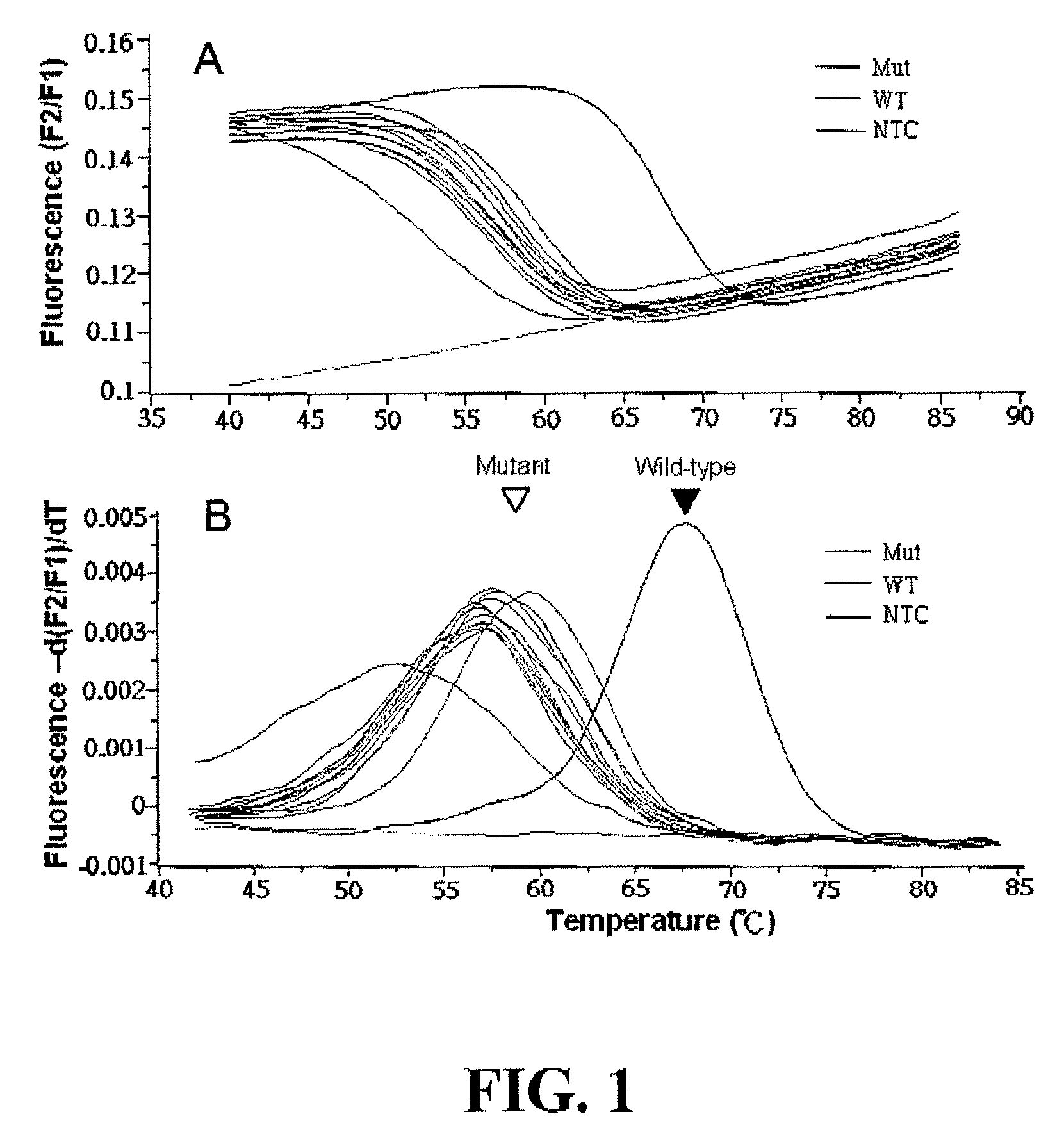Methods and kits for the detection of nucleotide mutations using peptide nucleic acid as both PCR clamp and sensor probe
a technology of peptide nucleic acid and nucleotide mutation, which is applied in the field of kits for the detection of nucleotide mutations using peptide nucleic acid as both pcr clamp and sensor probe, can solve the problems of inconvenient use of clinical laboratories, increased risk of contamination during multiple transfer, and inability to serve as primers for polymerization
- Summary
- Abstract
- Description
- Claims
- Application Information
AI Technical Summary
Benefits of technology
Problems solved by technology
Method used
Image
Examples
examples
Materials and Methods
1. Primers and Probes:
[0099]For PCR, three forward primers (F1, F2 and F3) and a reverse primer (R) were designed based on the genomic sequence of K-ras exon 1 so as to amplify DNA fragments containing the variable (selected) region of the K-ras gene [NCBI Accession Number L00045 (Locus: HUMRASK02)] of interest.
[0100]A sensor probe having a sequence that complements fully the sequence of the variable region of wild-type K-ras gene, was designed to be a 17-mer PNA labeled with fluorescein at its N-terminal (equivalent to the 5′-end of a DNA oligomer) via an O-linker. An anchor probe was designed to be a 44mer DNA labeled with fluorescent dye LC-Red 640 at the 3′-end thereof. The PCR primers and the anchor probe were provided by TIB MOLBIOL (Berlin, Germany). The PNA probe was provided by Applied Biosystems (Forster City, Calif., USA). Sequences of primers and probes used in the following experiments are listed in Table 1.
2. Preparation of K-ras Templates:
[0101]Wi...
PUM
| Property | Measurement | Unit |
|---|---|---|
| melting temperature | aaaaa | aaaaa |
| melting temperature | aaaaa | aaaaa |
| melting temperature | aaaaa | aaaaa |
Abstract
Description
Claims
Application Information
 Login to View More
Login to View More - R&D
- Intellectual Property
- Life Sciences
- Materials
- Tech Scout
- Unparalleled Data Quality
- Higher Quality Content
- 60% Fewer Hallucinations
Browse by: Latest US Patents, China's latest patents, Technical Efficacy Thesaurus, Application Domain, Technology Topic, Popular Technical Reports.
© 2025 PatSnap. All rights reserved.Legal|Privacy policy|Modern Slavery Act Transparency Statement|Sitemap|About US| Contact US: help@patsnap.com



